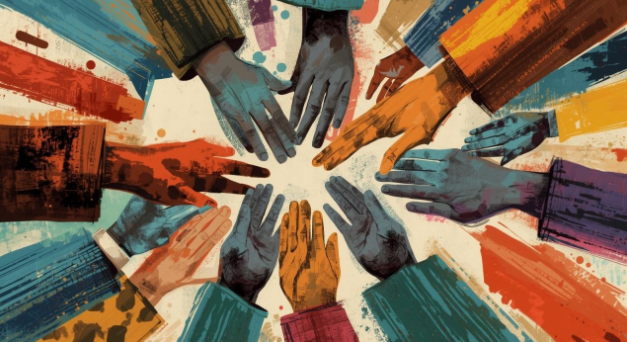Liderança | Empreendedorismo | Gestão | Planeamento | Estratégia | Escrita para Financiamento | Especialista em financiamento para desenvolvimento | Orador internacional
27 de setembro de 2025
In recent years, the development ecosystem has increasingly acknowledged the limitations of isolated interventions in tackling systemic challenges such as inequality, climate change, and access to education. A consortium approach—where organisations of varied expertise, sizes, and geographies collaborate towards a shared vision—has emerged as a strategic mechanism to amplify and sustain transformative impact. This approach moves beyond traditional partnerships, fostering a structured collaboration that not only pools resources but also strengthens peer learning and enhances programme scalability.
Operating as a consortium enables organisations to transcend their individual capacities and instead leverage their collective strengths. Smaller organisations often bring agility, community embeddedness, and contextual expertise, while larger entities contribute with robust infrastructures, broader networks, and financial sustainability. Such complementarities allow for interventions that are both context-sensitive and scalable.
For example, in large-scale social development programmes, a consortium structure ensures that not only is there alignment with global best practices, but also that localised interventions remain relevant and culturally attuned. This duality—balancing global knowledge with local realities—is key to creating impact that resonates across different levels of society (OECD, 2019).
One of the most powerful features of a consortium is the embedded culture of peer learning. By design, consortiums create structured avenues for knowledge sharing, mutual mentoring, and the exchange of innovative practices across organisations. Smaller organisations can learn about governance frameworks, fundraising strategies, and reporting mechanisms from their larger counterparts. Conversely, grassroots actors often provide fresh insights into participatory methodologies, inclusion strategies, or agile adaptation, which can reshape the practices of larger institutions (Kania & Kramer, 2011).
This cross-fertilisation of perspectives cultivates a dynamic learning ecosystem where continuous improvement becomes a collective responsibility. Such environments mitigate silos, reduce duplication of efforts, and instead drive innovation through collaboration.
Implementing programmes on a large scale requires not only resources but also multi-layered expertise. A consortium model ensures that these diverse capacities are integrated within a unified strategy, thereby reducing fragmentation. Governance structures within consortiums often include shared decision-making, standardised monitoring frameworks, and accountability mechanisms that maintain coherence whilst respecting member autonomy (Lederach, 2016).
This collective operating model also helps strengthen advocacy power and legitimacy. When organisations represent a unified voice, their ability to influence policy, mobilise funding, and sustain long-term commitments is exponentially enhanced. The process of joint planning and implementation minimises inefficiencies and creates economies of scale without suppressing the unique contributions of individual members.
The consortium approach is not merely about resource pooling; it represents a paradigm shift in how development is conceptualised. By embedding collaboration, mutual accountability, and shared learning into the core of operations, consortium models align strongly with systems change thinking. They offer a mechanism to address structural barriers collectively rather than in isolation, thereby increasing the likelihood of long-term transformation (Westley et al., 2014).
The future of impactful development may well rest on the capacity of organisations to embrace consortia as strategic vehicles, moving from competition to cooperation, and from fragmented impact to collective transformation.
References
Kania, J., & Kramer, M. (2011). Collective Impact. Stanford Social Innovation Review, 9(1), 36-41.
Lederach, J. P. (2016). The Moral Imagination: The Art and Soul of Building Peace. Oxford University Press.
OECD. (2019). Development Co-operation Report 2019: A Fairer, Greener, Safer Tomorrow. OECD Publishing.
Westley, F., Zimmerman, B., & Patton, M. (2014). Getting to Maybe: How the World is Changed. Vintage Canada.


